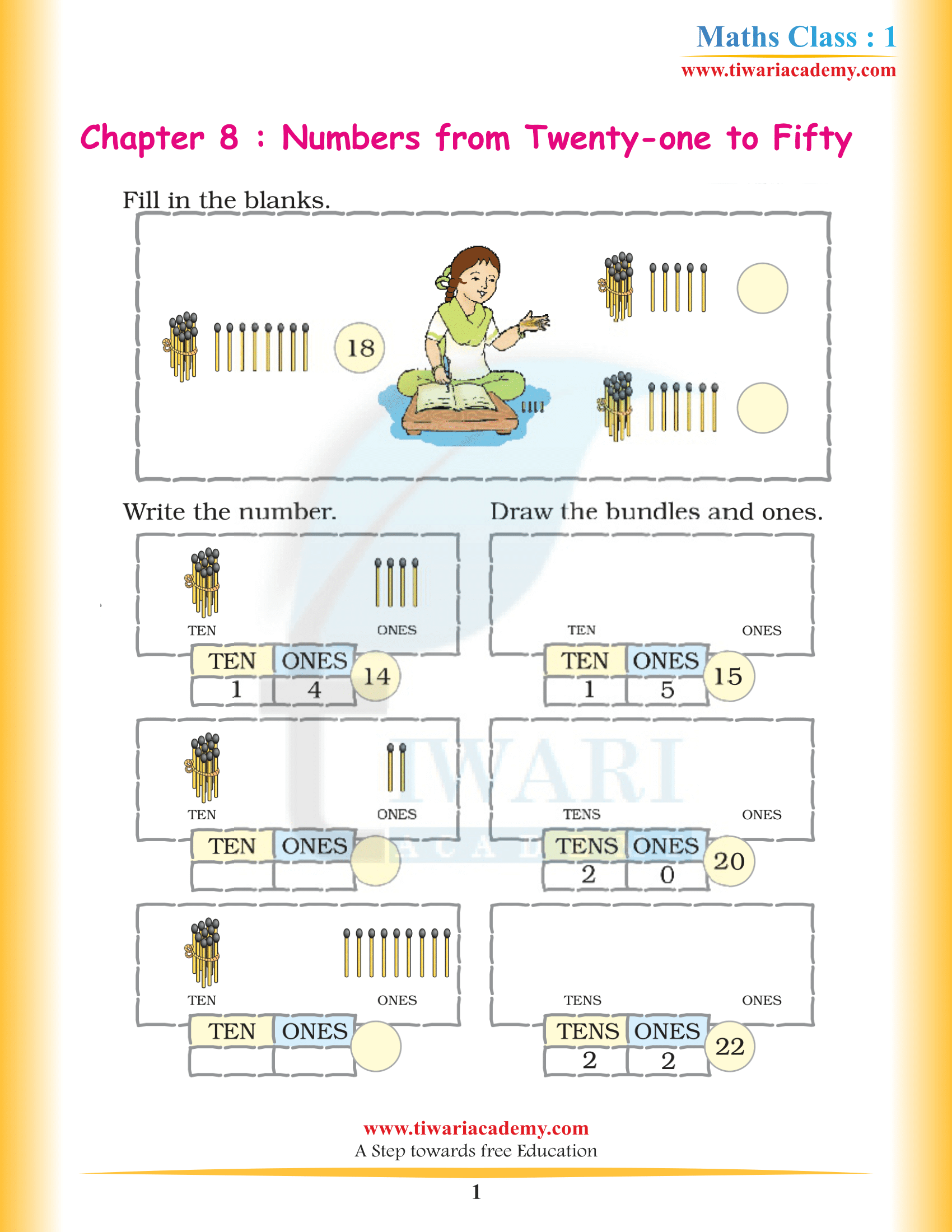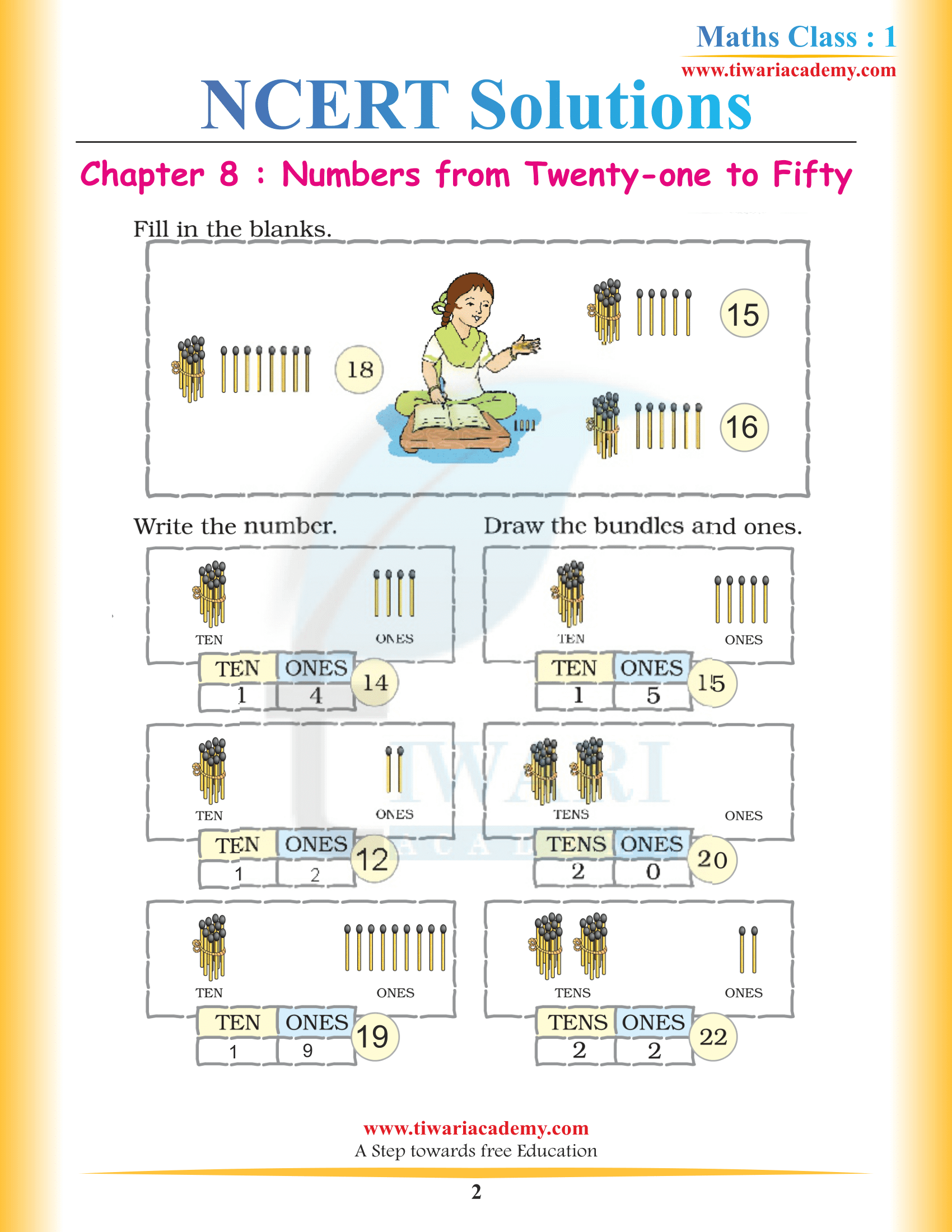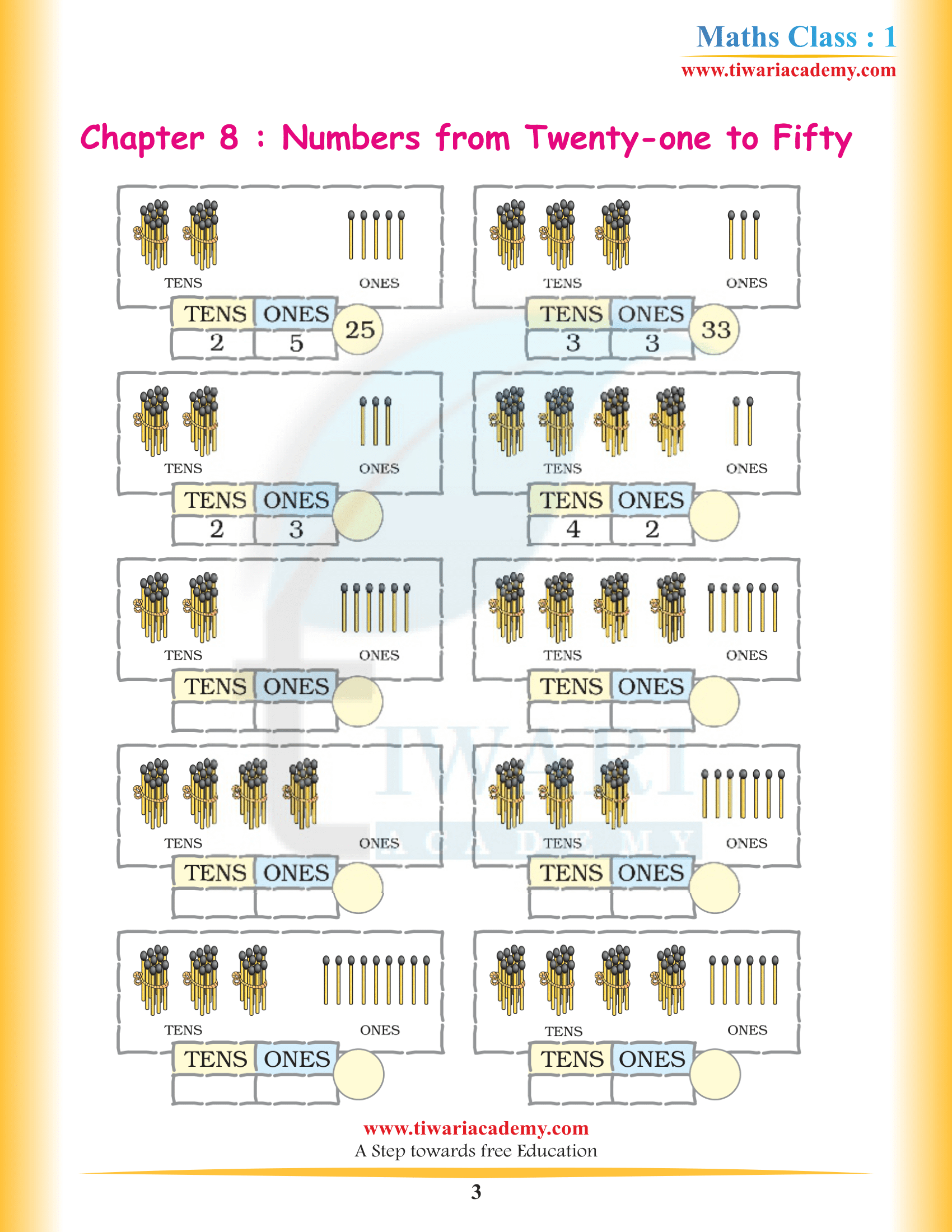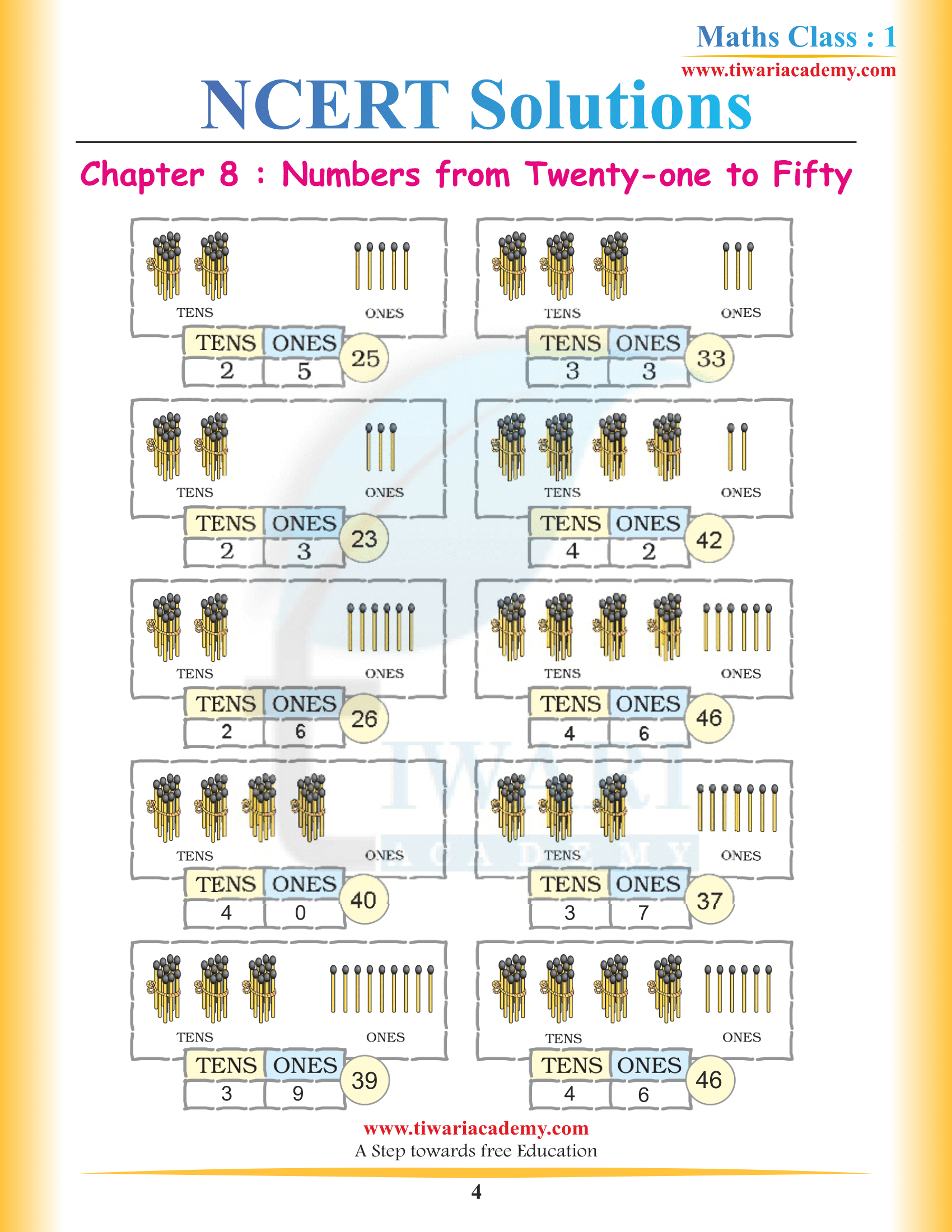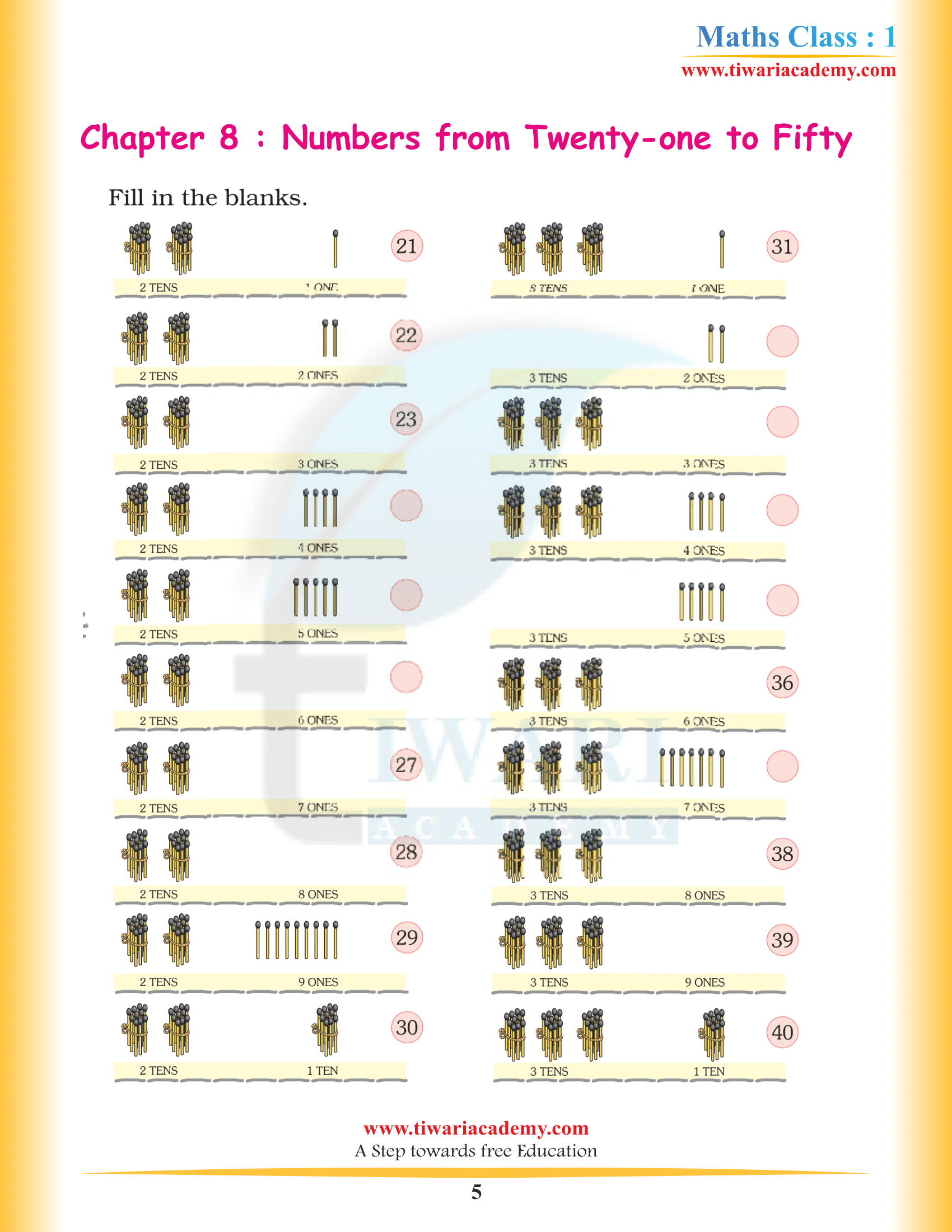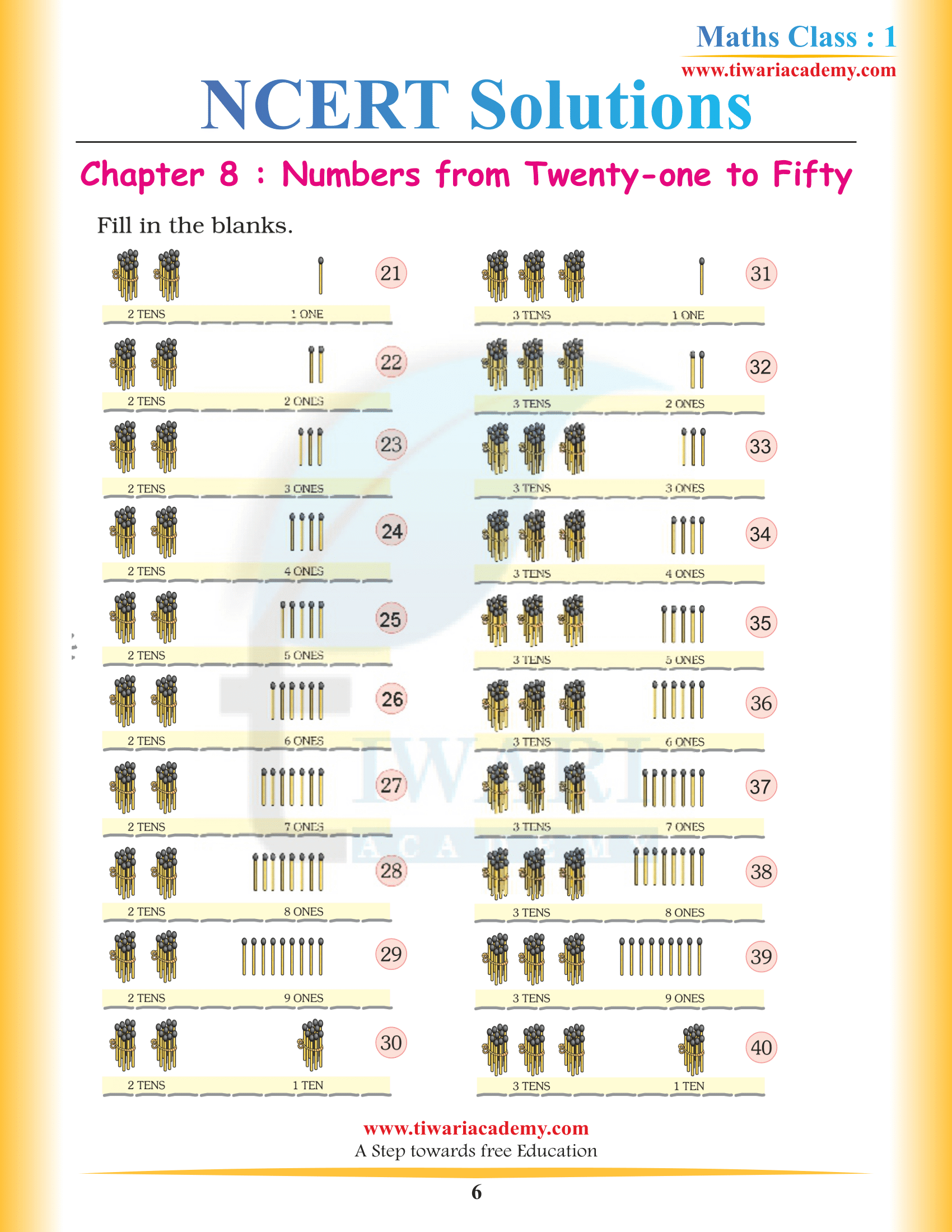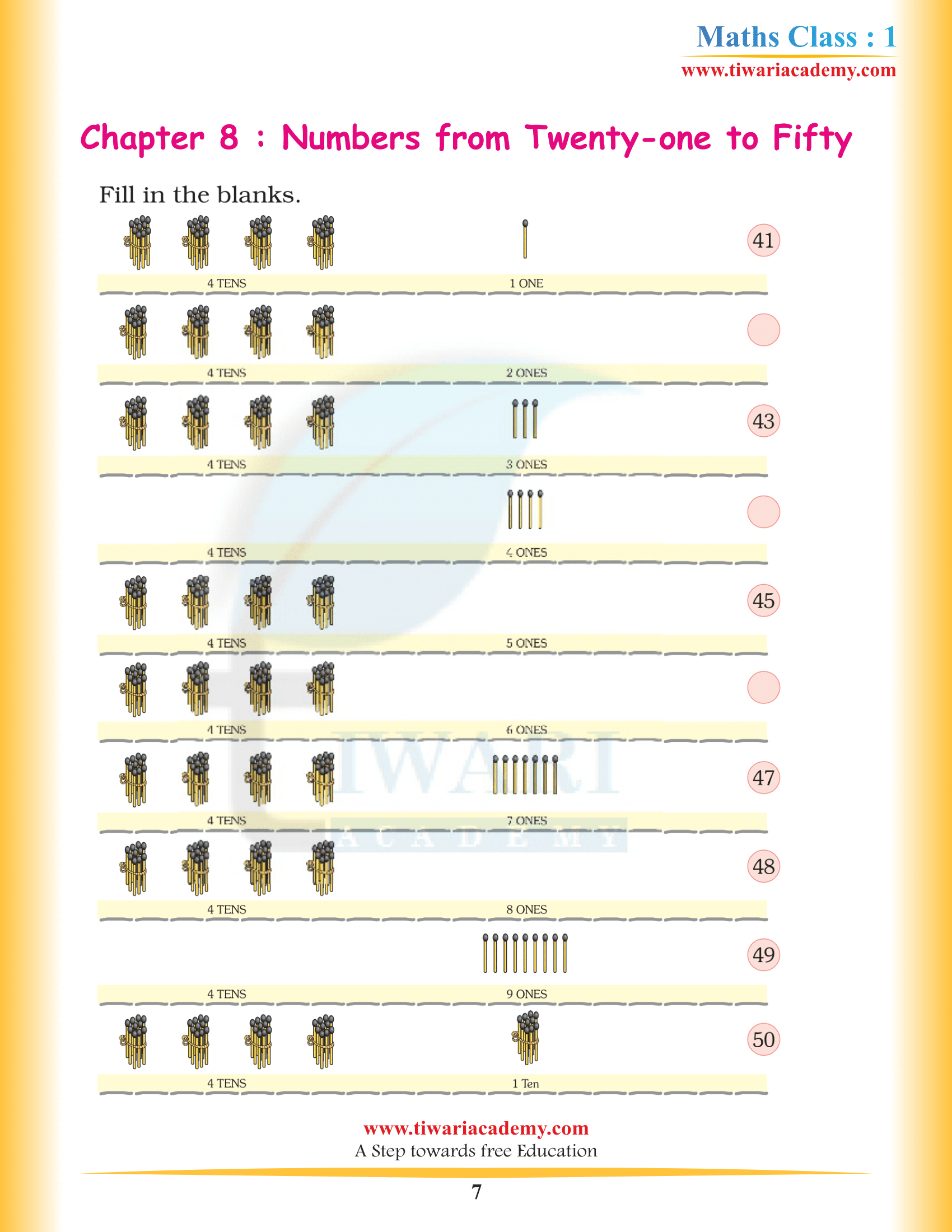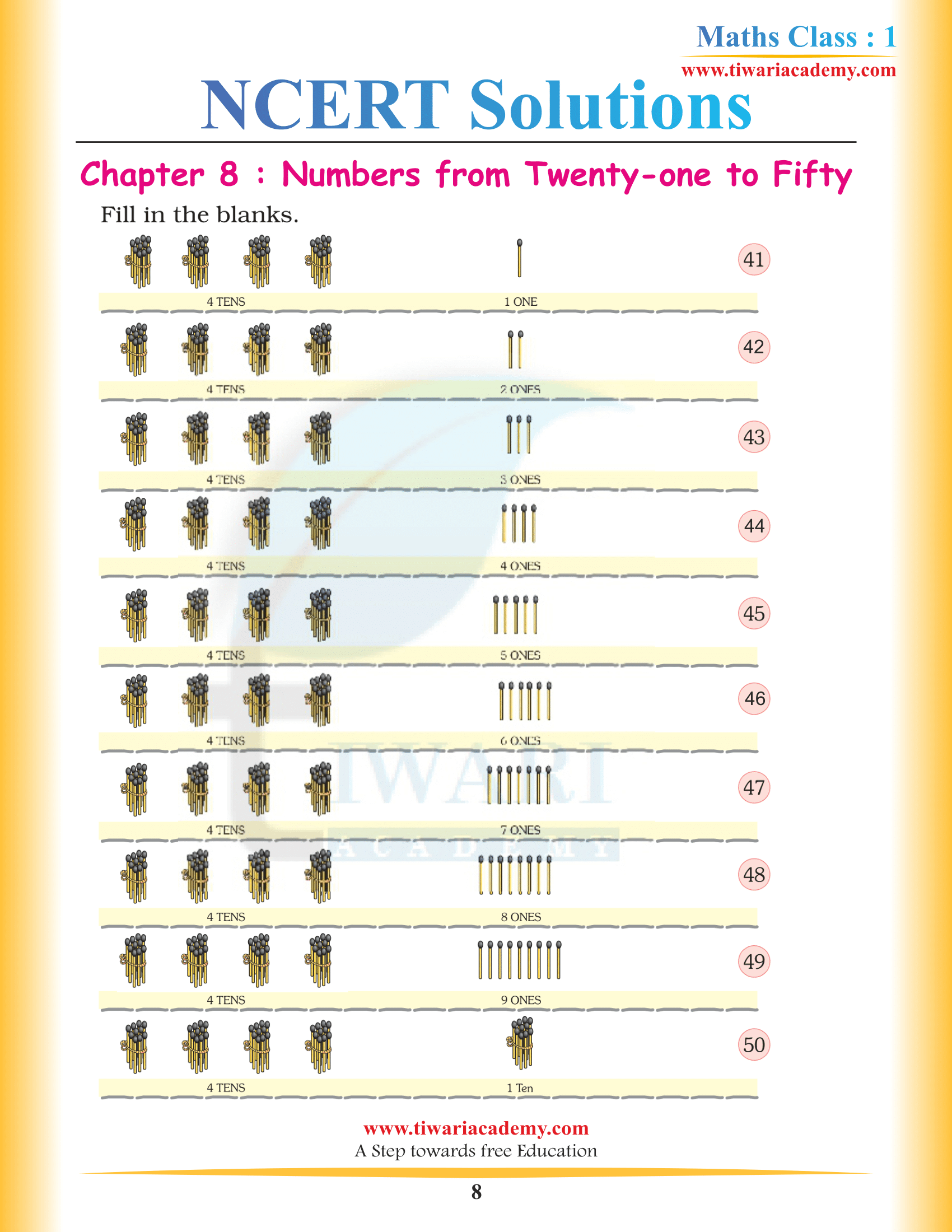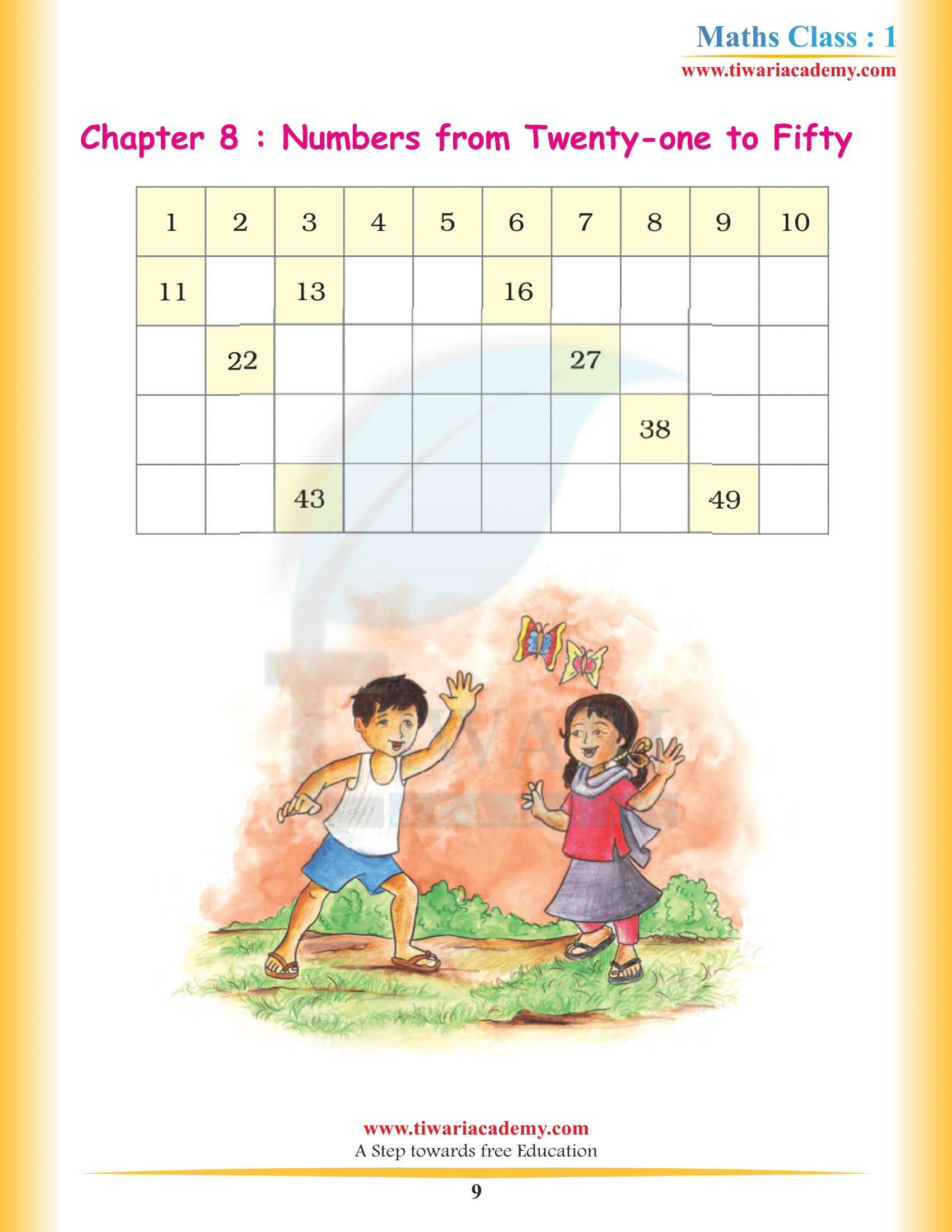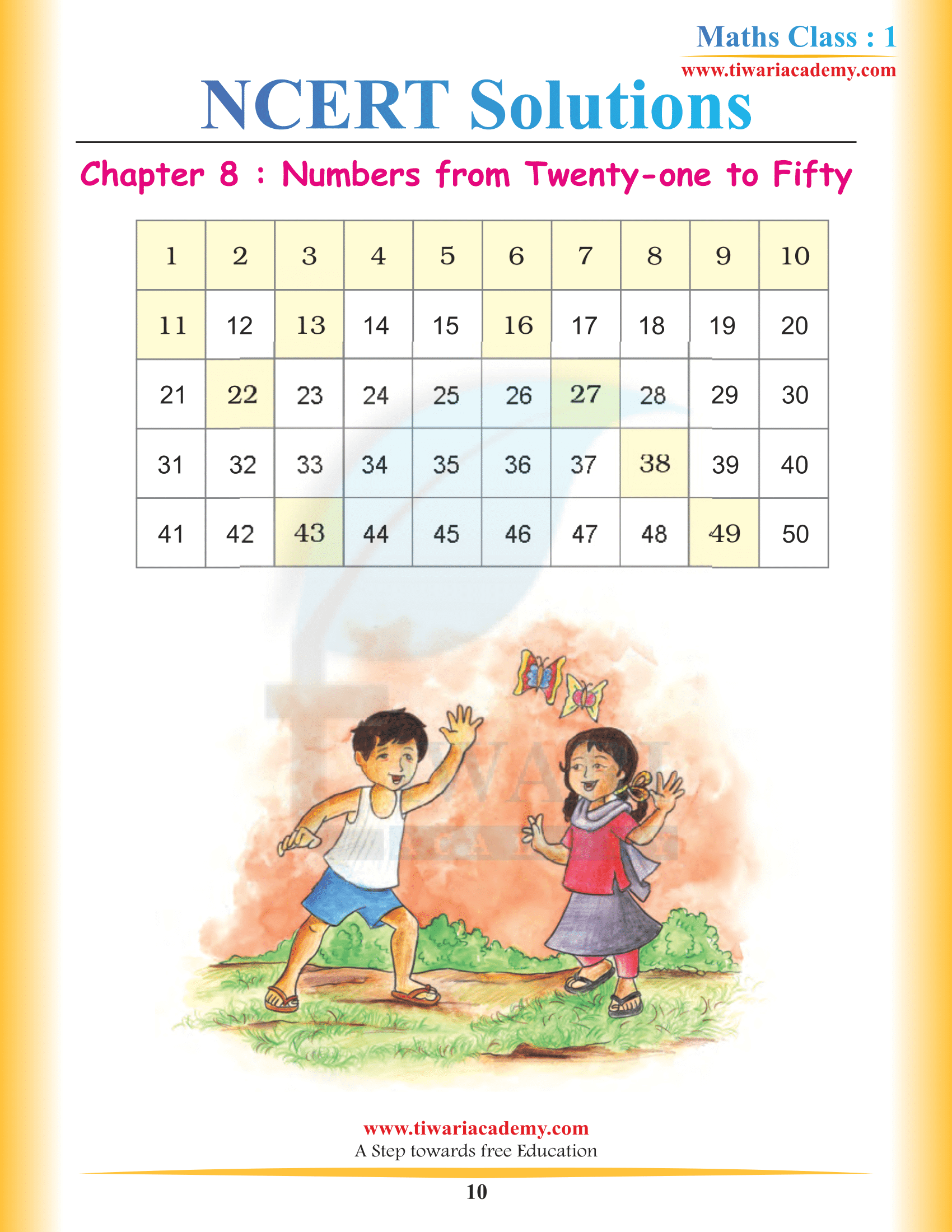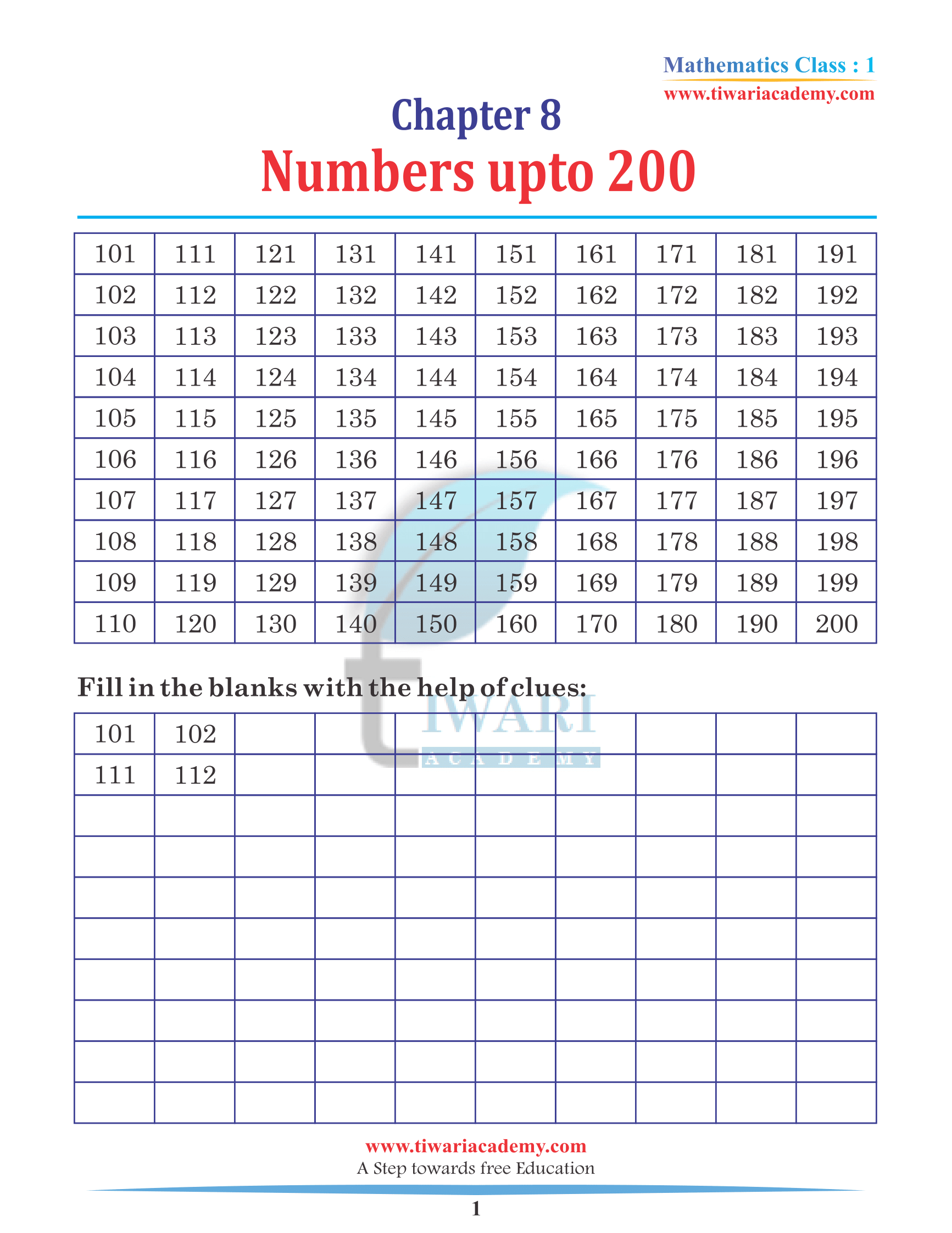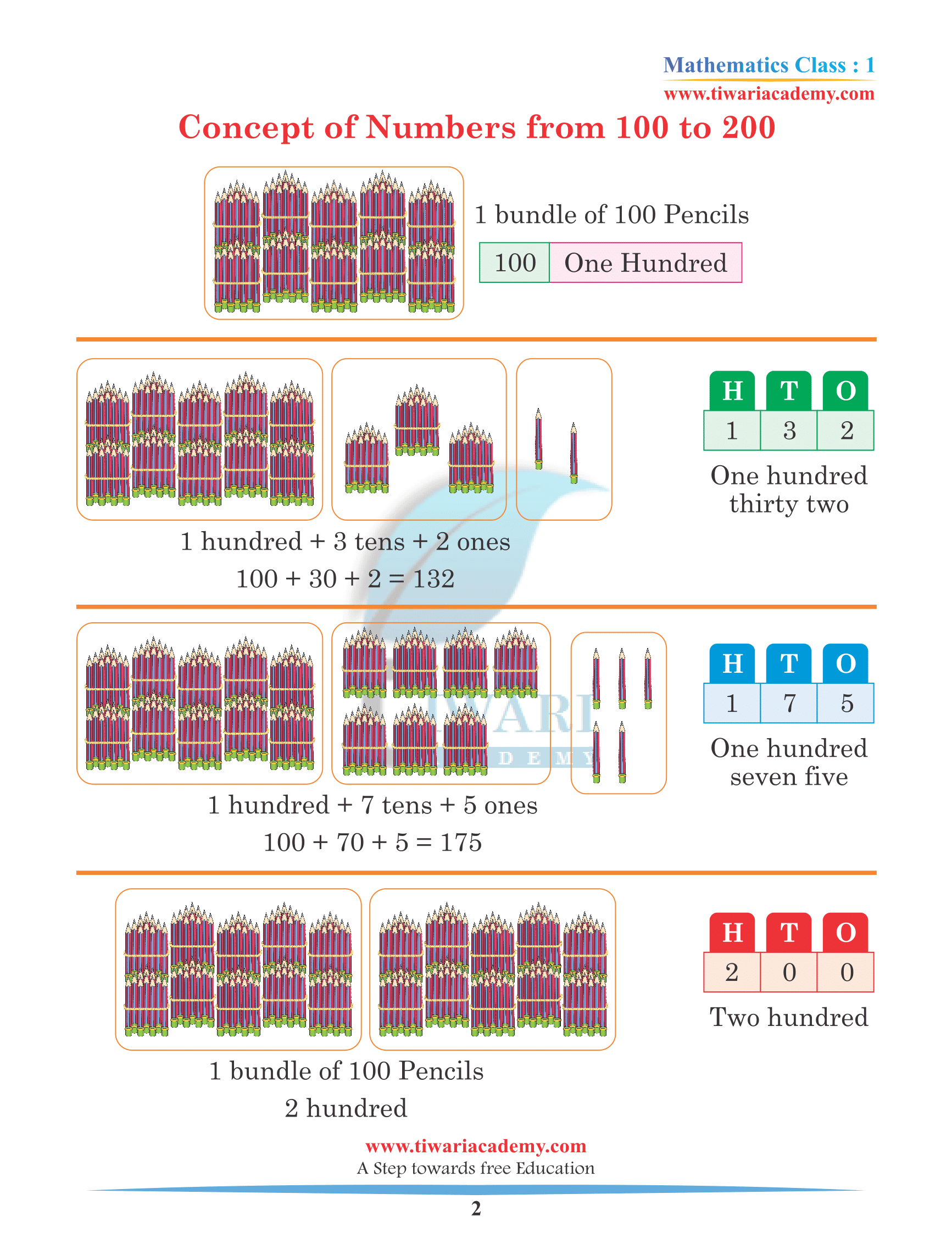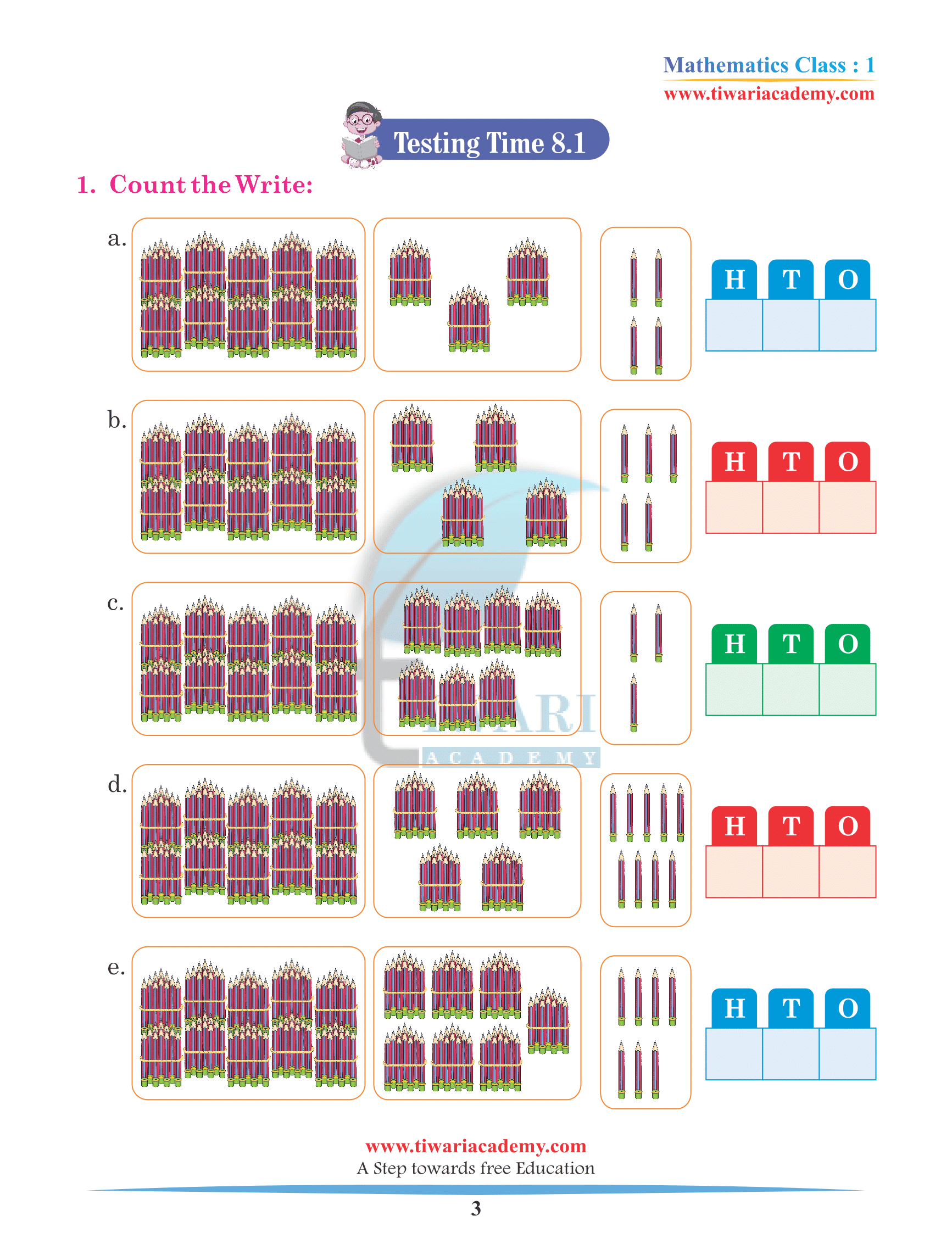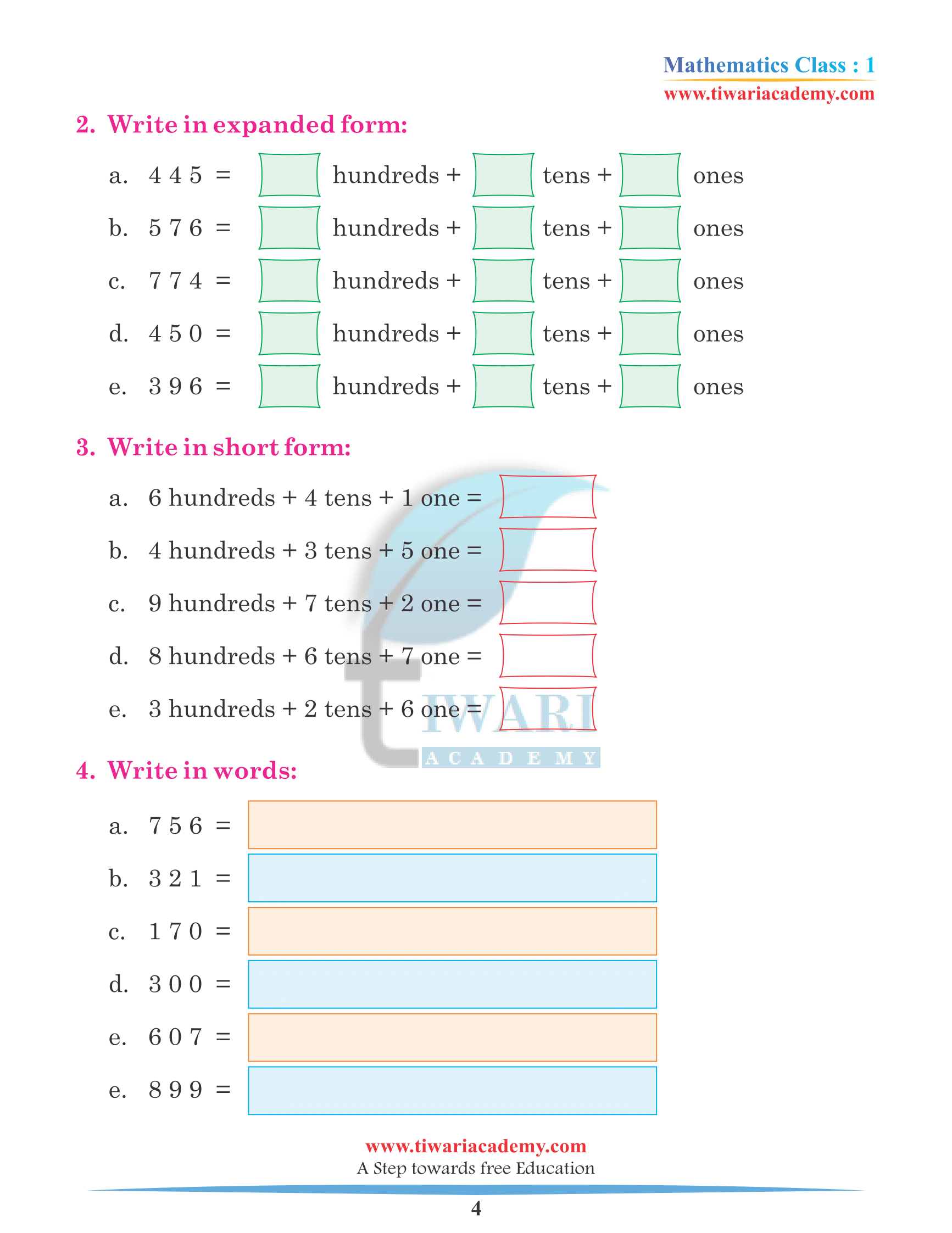NCERT Solutions for Class 1 Maths Chapter 8 Numbers form Twenty one to Fifty in Hindi and English Medium Question Answers with extra important revision questions updated for CBSE Session 2024-25. Practice with Revision Book for the preparation of class tests and school terminal exams. Revision Book is quite helpful for revision as well as to be confident in concepts of chapter.
Class 1 Maths Chapter 8 Numbers form Twenty one to Fifty
Teaching Class 1 NCERT Maths Chapter 8, Numbers from Twenty-one to Fifty, requires a mix of hands-on activities, visual aids, and repetitive practice to make the concepts clear and fun for young learners. Start by revisiting numbers 1-20, as understanding these will be foundational to grasping 21-50. Ask students to count aloud, write numbers on the board, or show flashcards to test their recall.
NCERT Solutions for Class 1 Maths Chapter 8
NCERT Solutions for Class 1 Maths Chapter 8 Numbers form 21 to 50
To learn the number properly, display the numbers 21-50 on the board or use number flashcards. The numbers 21-29 have the prefix twenty, followed by the unit number (e.g., twenty-one, twenty-two). Continue explaining patterns for the thirties, forties, etc. Display a chart from 1-50. This provides a visual representation and helps students see patterns. Use number line because these help kids visualize the sequence and the relative position of numbers.
Use physical objects like beads, buttons, or counters. Start with 20 and keep adding while counting aloud until you reach 50. Print numbers on cards and have students match them with the correct quantity of objects. Draw numbers on the ground. Have students jump on them in sequence while saying the number aloud. Sit students in a circle. Start with one student saying twenty-one, then pass the ball to the next student who says twenty-two, and so on.
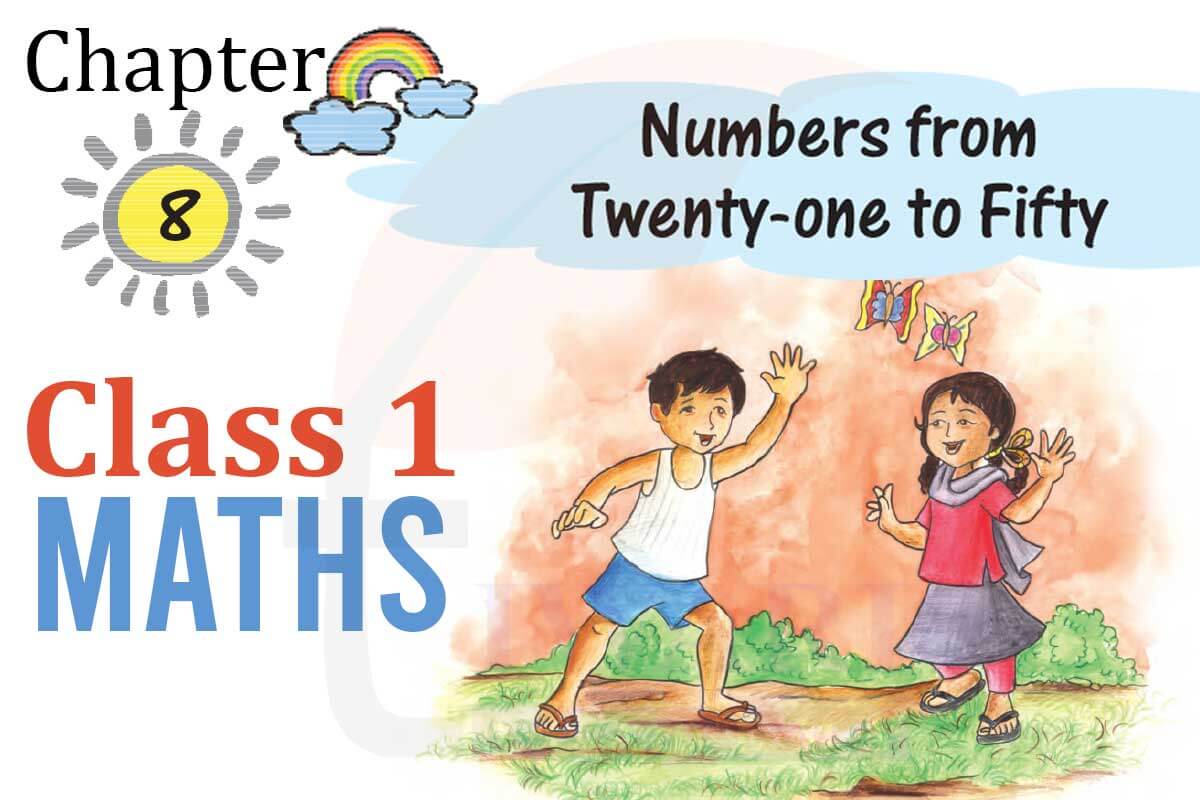
Numbers from twenty to fifty
In previous chapters, we have already learned to count with the help of math sticks. Here you will count to fifty easily and creatively. So count the match sticks bundle of tens and add them to the other bundle. It is simple.
Create bingo cards with numbers 21-50. Call out numbers and have students mark them. Incorporate numbers into stories. For instance, there were 20 balls in the bag. If three are missed out, how many were left? Have students practice writing numbers 21-50. Fill in the blanks, missing numbers, and simple number-based puzzles.
Write the Number:
| Ten | Ones | Number |
|---|---|---|
| 1 | 4 | 14 |
| 2 | 0 | 20 |
| 2 | 2 | 22 |
| 3 | 7 | 37 |
| 2 | 9 | 29 |
Use educational apps or websites like Tiwari Academy with number games targeting the range 21-50. Animated videos or songs that focus on counting can be both engaging and educational. Start or end each day with a quick counting session. Repetition is key at this age. Encourage students to count objects in their surroundings, like books, pencils, etc. Periodically assess students’ understanding through oral quizzes, written tests, or interactive activities.
Address any misconceptions or difficulties immediately. Encourage students to identify and count numbers in their environment, like house numbers, pages in a book, or items in a grocery store. Celebrate milestones, such as when a student can confidently count to 50. Provide constructive feedback, and encourage students to practice more if they’re finding certain numbers challenging.
Number from 21 to 40: Fill in the Blank
| Ten | Ones | Number |
|---|---|---|
| 2 | 1 | ___ (21) |
| ___ (3) | 7 | 37 |
| 3 | ___ (2) | 32 |
| 4 | 0 | ___ (40) |
Remember to keep the learning environment positive and supportive. At this age, children learn best when they’re having fun and feel encouraged. Adjust the pace based on the class’s progress and be open to revisiting concepts if needed.
The difficulty of learning numbers from twenty-one to fifty for a grade 1 student largely depends on a variety of factors including prior exposure, teaching methods, and individual learning capabilities. Children who have been introduced to larger numbers informally before grade 1, such as during conversations at home, might find it easier.
The numbers 21-50 in English follow a certain pattern, especially for numbers 21-29 (like twenty-one, twenty-two, and so on). Once students grasp this pattern, it can become simpler to remember the subsequent numbers.
Engaging, interactive, and hands-on teaching methods can make this learning process more enjoyable and easier to understand. If abstract concepts are introduced without concrete examples or hands-on activities, it may be more challenging for some children.
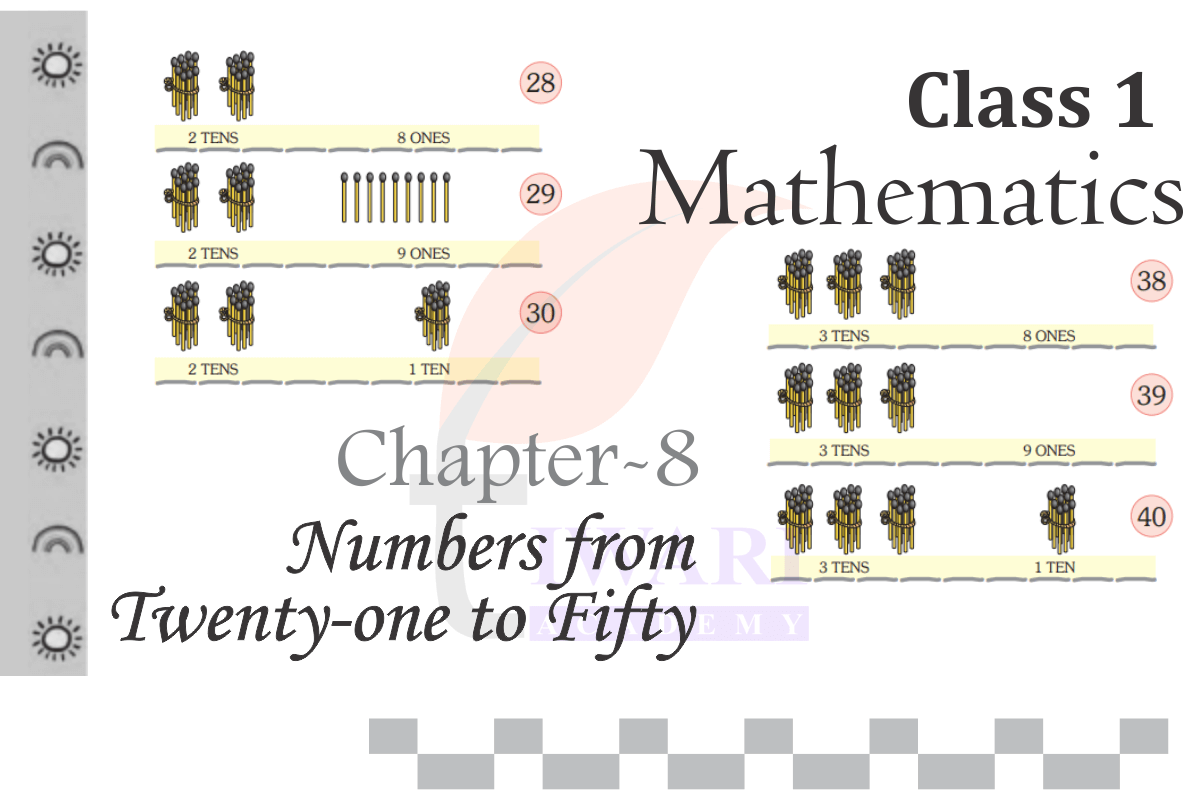
Number from 41 to 50
| Ten | Ones | Number |
|---|---|---|
| 4 | 1 | ___ (41) |
| ___ (4) | 7 | 47 |
| 4 | ___ (2) | 42 |
| 4 | 5 | ___ (45) |
Every child is unique. Some children may pick up numerical concepts quickly, while others might need more repetition or different strategies. By the time children reach grade 1, most have developed the cognitive skills necessary to understand counting and basic number concepts. However, the ability to grasp abstract concepts varies.
Write the Missing Number
Since you already learned to count till fifty and know about the bundle of match stick bundles. Would you be able to guess the next exercise about how to find the missing numbers? Challenge yourself and try to find all the missing numbers it is kind of a game.
Ten Ones Number
2 3 ___ (23)
___ (4) 7 47
3 ___ (4) 34
4 1 ___ (41)
In some languages, the naming structure of numbers can be more complicated or simpler than in English. For instance, certain languages have unique names for each number up to 100, while others (like English) use patterns. This can play a role in how easily a child grasps numbers in a particular language. A child’s attitude towards math and numbers can also play a significant role. If a child has had negative experiences or has developed a fear of making mistakes, they might find learning new concepts more challenging.
What does chapter 8 of maths class 1 trying to teach the kids?
The chapter is trying to teach the student how to collect the information given in the chapter in the form of shapes. In the paintings.
While for many grade 1 students, learning numbers from twenty-one to fifty can be a natural progression from learning 1-20, others might need more time and practice. It’s essential to ensure that the learning experience is positive and supportive, adjusting the pace based on individual progress.
What else one can do in the small chapter 8 of maths to make it more interactive for the children?
In the chapter, the painting is given and that is blank and the drawing is made from different shapes we can always make the children colour the pictures so that they can learn to collect the data and count while coloring the picture and having fun.
Did you find enough activities in unit 8 of maths to make the students of class 1 learn to collect data?
The chapter is only given as a small part we can always make them learn more through activities through our creativity cuz along t=with them we also get the idea how to make it work.
